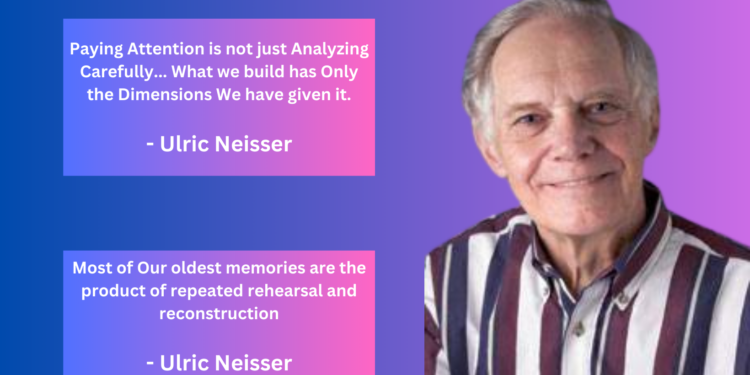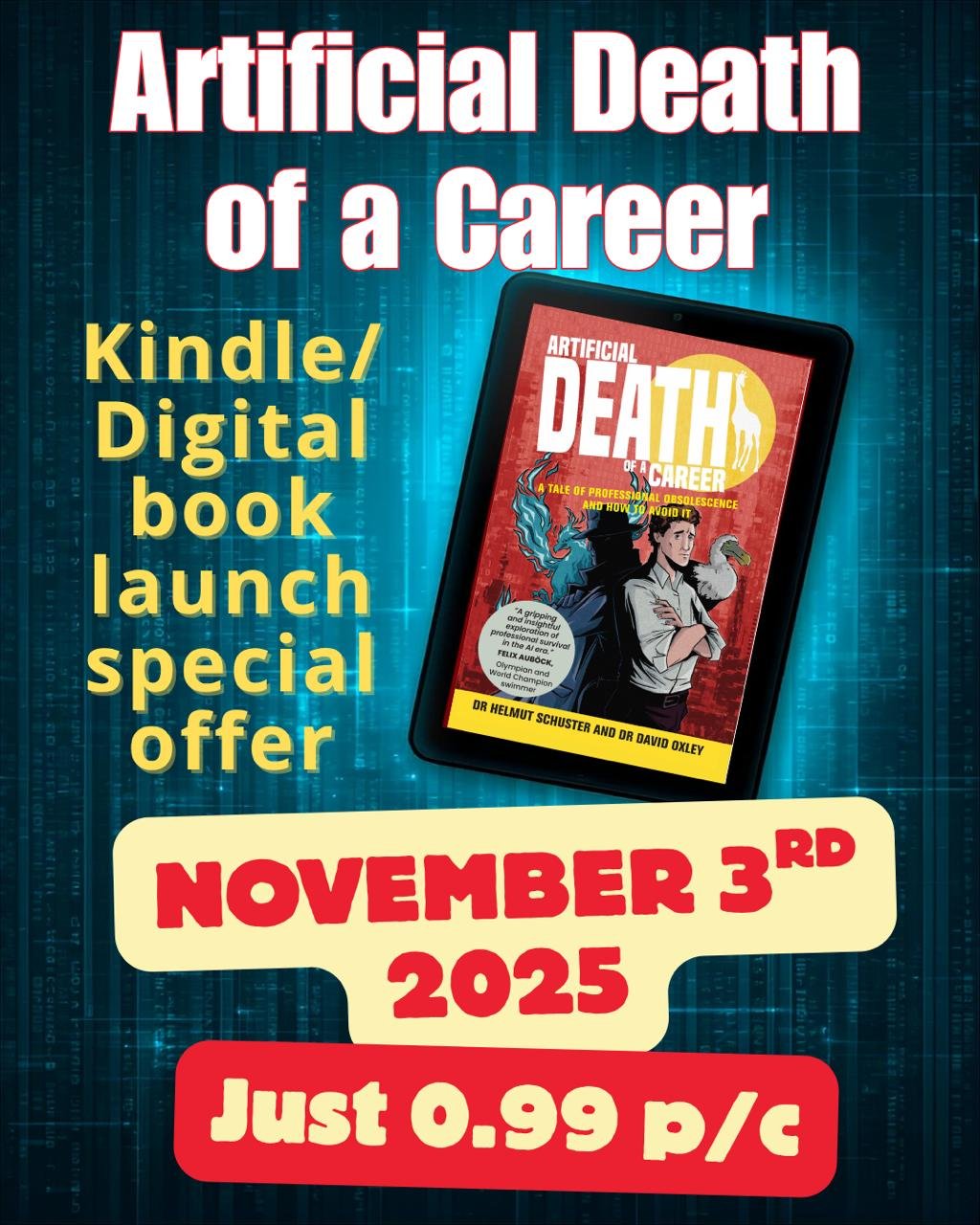Ulric Neisser, often heralded as the “Father of Cognitive Psychology,” significantly shaped our understanding of the human mind, intelligence, and memory through his pioneering research and thought-provoking concepts. His work has left a profound impact on the field of psychology, blending insights from Gestalt psychology with innovative approaches to studying cognitive processes.
Early Life and Career
Neisser was born in Germany in 1928 and moved to the United States in 1933. He pursued his education in psychology at Harvard University, where he was influenced by prominent figures such as George A. Miller, Hans Wallach, and Abraham Maslow. His interactions with Oliver Selfridge, a young computer scientist, introduced him to artificial intelligence, which played a crucial role in shaping his future work.
Key Contributions
Cognitive Psychology
In 1967, Neisser published “Cognitive Psychology,” a book that not only named the field but also laid the foundational concepts that would guide research and theory for decades. This work emphasized the importance of understanding internal mental processes—such as perception, memory, and problem-solving—to grasp human behavior fully. Neisser’s approach contrasted with the behaviorist perspective prevalent at the time, which largely ignored the internal workings of the mind.
Memory and Reconstruction
Neisser’s research on memory challenged the then-prevailing notion that memory works like a camera, faithfully recording events for later retrieval. Through various studies, including his analysis of John Dean’s testimony in the Watergate scandal, Neisser demonstrated that memory is a reconstructive process. Our recollections of past events are influenced by subsequent experiences, beliefs, and emotions, often leading to inaccuracies. This insight has profound implications for understanding eyewitness testimony, the malleability of memory, and the mechanisms of false memory syndrome.
Most of our oldest memories are the product of repeated rehearsal and reconstruction.
Ulric Neisser
Flashbulb Memories
Neisser also delved into the study of “flashbulb memories,” a term initially coined by Brown and Kulik, which refers to vivid, detailed memories of significant, emotionally charged events. Through his research on individuals’ recollections of the Challenger space shuttle disaster, Neisser found that even these seemingly indelible memories are prone to distortion over time. This work underscored the dynamic, constructive nature of memory and challenged the assumption that emotional arousal guarantees memory accuracy.
Schemas and Information Processing
Neisser contributed significantly to our understanding of how knowledge structures, or schemas, influence perception and memory. Schemas, developed through past experiences, help organize and interpret incoming information. They play a crucial role in determining what we notice, how we interpret events, and how we recall experiences. However, they also have the potential to distort our perceptions and memories, as they can lead us to overlook or misinterpret information that does not fit into our existing frameworks.
A cognitive map is essentially a larger kind of schema. That is, it accepts information and directs action.
Ulric Neisser
Selective Looking and Inattentional Blindness
Through innovative experiments, Neisser explored the concept of selective looking or inattentional blindness, demonstrating how people can fail to notice unexpected objects and events when their attention is focused elsewhere. This line of research highlighted the limitations of human attention and the selective nature of perception.
Legacy
Neisser’s work, spanning from the principles of perception and memory to the complexities of intelligence and the self, has profoundly influenced cognitive psychology and related fields. His dedication to connecting laboratory findings with real-world applications paved the way for a deeper, more nuanced understanding of the human mind. Neisser’s legacy is not just in the theories he developed or the experiments he conducted, but also in the critical and constructive mindset he brought to the study of cognition.
Neisser’s contributions to psychology were vast and varied, touching on everything from the foundational structures of cognitive psychology to specific phenomena like flashbulb memories and the reconstructive nature of memory. His work continues to inspire and challenge psychologists, offering a rich source of insights and questions that drive the field forward.
These concepts not only enriched the field of psychology but also have far-reaching implications for various domains, including human resources (HR) and talent building.
Implications and Application for HR and Talent Building
The application of Neisser’s concepts to HR and talent development underscores a transformative approach to organizational growth and employee management. Understanding that memory and perception are not infallible but are influenced by schemas and past experiences can significantly affect how companies approach training, performance evaluation, conflict resolution, and talent acquisition.
Training and Development: Neisser’s findings on the reconstructive nature of memory highlight the need for continuous learning and reinforcement in training programs. Organizations can design training modules that reinforce key concepts over time, using varied contexts and scenarios to enhance memory retention and application.
Performance Evaluation: Recognizing that human memory is reconstructive, HR professionals can implement more objective, data-driven approaches to performance evaluation. This includes using multiple sources of information and feedback to get a comprehensive view of an employee’s performance, reducing biases that arise from relying solely on memory.
Conflict Resolution: Understanding schemas and how they influence perception can be pivotal in conflict resolution within organizations. HR can facilitate more empathetic and effective conflict resolution strategies by acknowledging that individuals may interpret the same event differently based on their schemas.
Talent Acquisition: Neisser’s work on inattentional blindness and schemas suggests that HR professionals might overlook potential talent due to preconceived notions or focused attention on specific criteria. Expanding recruitment strategies to challenge these biases can lead to the discovery of diverse and innovative talent pools.
Future Directions: As organizations navigate increasingly complex and dynamic environments, integrating cognitive psychology principles into HR practices offers a path to more adaptive, resilient, and human-centric approaches. Leveraging insights from Neisser’s work can guide the development of strategies that recognize the nuanced interplay between cognition, behavior, and the organizational context. This includes harnessing cognitive diversity, enhancing team dynamics, and fostering a culture of continuous learning and psychological safety.
Ulric Neisser’s contributions to cognitive psychology offer valuable lessons for HR and talent development. By applying these insights, organizations can not only optimize their HR practices but also create environments that nurture innovation, adaptability, and human potential. Neisser’s legacy thus continues to influence not only the realm of psychology but also the evolving landscape of work and organizational management.











